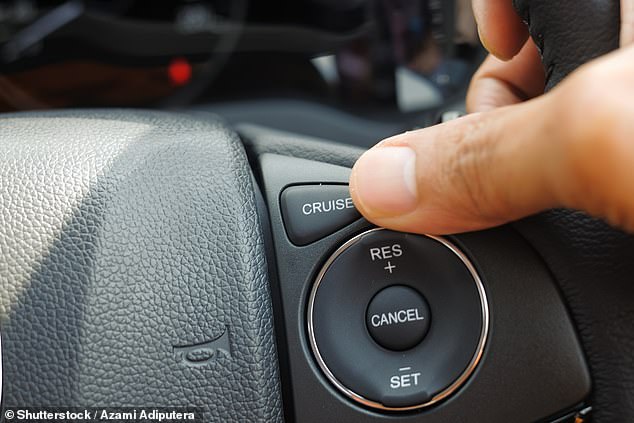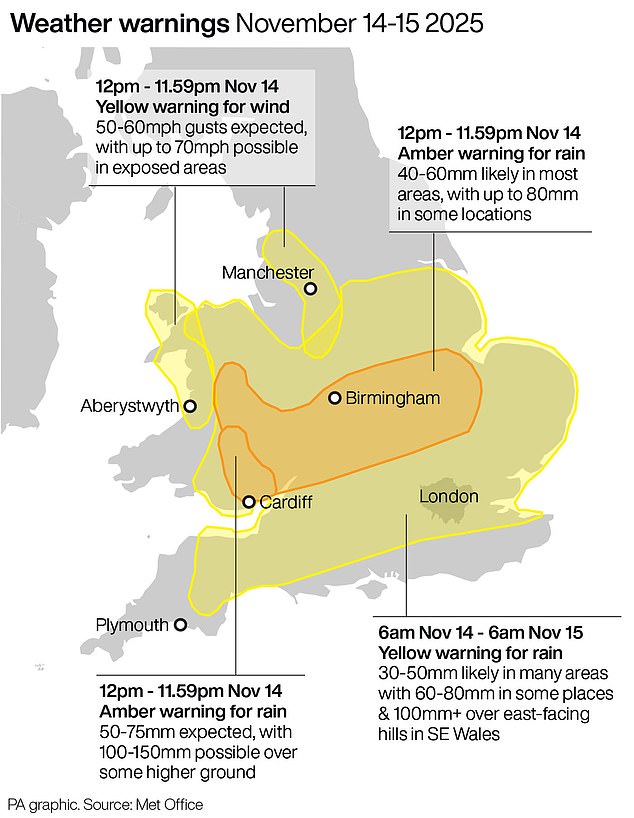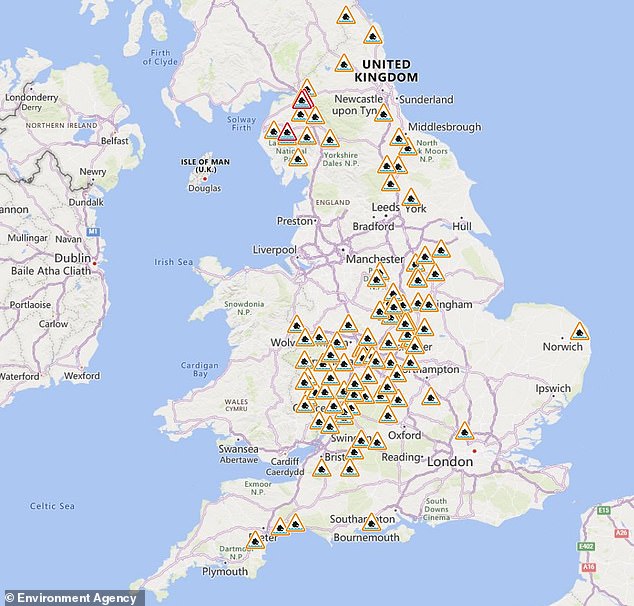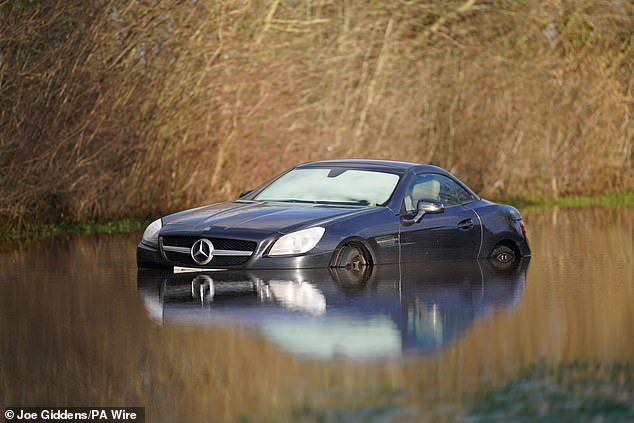With Britain set to be drenched by a month’s worth of rain in 24 hours on Friday, motoring experts have warned there is a one button in their cars they should absolutely not press during Storm Claudia.
Two 12-hour ‘danger to life’ amber warnings for up to six inches (150mm) of rain have been imposed for parts of central England and South Wales, from noon until midnight.
And as well as 120 flood alerts nationwide, Britons will also be tackling winds of up to 70mph.
With the treacherous conditions set to cause havoc on the roads, motoring groups and safety organisations have been urging caution to drivers.
Among the recommendations to keep motorists safe is the call for drivers to not use one everyday feature designed for convenience.
With a rise in surface water on roads comes the risk of ‘aquaplaning’ – where a layer of water between tyres and the road surface can lead to a total loss of traction and control of the vehicle’s direction of travel.
And using a car’s cruise control can increase the risk of this happening, Select Car Leasing has warned.

With Britain set to be drenched by a month’s worth of rain within 24 hours on Friday, motoring experts have warned drivers not to use one car feature during Storm Claudia…

Cruise control can increase the risk of aquaplaning when driving through standing water, which is why drivers are told to not use it during storm conditions

Graham Conway, managing director at the vehicle leasing company, warned: ‘Cruise control assumes that your car’s tyres are maintaining constant traction with the road.
‘When that traction fails, such as when you aquaplane, the system senses a drop in engine load – perhaps assuming you’re climbing a steep hill – and adds throttle to maintain your speed.
‘In an aquaplaning scenario, the last thing you want to do is to accelerate and make your tyres spin even faster, as it’s likely to worsen your loss of traction.
‘Relying on cruise control in wet weather driving might also delay your reaction to the threat while masking the fact that you’re aquaplaning at all.
‘Cruise control also makes it tougher to ease off the accelerator gently – which you should do if you start aquaplaning – as it’s typically cancelled by applying the brakes or dabbing the clutch, both of which could actually add to your loss of control.’
If drivers do feel their car is aquaplaning they should ease off the throttle and avoid braking.
They too should keep both hands on the wheel and try to avoid any sudden steering movements, as doing so could send the vehicle veering off course once traction does return, while maintaining a safe following distance to the vehicle in front.
Rule 227 of the Highway Code also adds: ‘If the steering becomes unresponsive, it probably means that water is preventing the tyres from gripping the road. Ease off the accelerator and slow down gradually.’

The general rule for motorists is to not drive through standing water that’s more than 10cm/4 inches deep

The Environment Agency has issued three flood warnings (in red) and 96 alerts (in orange) for Friday 14 November
Meanwhile National Highways has also issued advice for driving in extreme wet weather.
It state:
- If it’s time for your wipers, it’s time to slow down
- Use dipped headlights, especially if visibility is seriously reduced
- The roads will be more slippery than usual, so give yourself more time to react – increase the gap between you and the vehicle in front to at least four seconds
- Look out for standing water – adjust your driving before and after encountering any
- Keep your eyes on the road at all times – spray from other vehicles can suddenly reduce your visibility
- Visibility affects others too, so anticipate their actions and be prepared
- During thunderstorms, sudden gusty winds can unsettle vehicles. Keep your speed down and give other road users more room

Aviva says that motors caught up in flooding on average suffer £6,638 worth of damage – and 60 per cent of claims result in a write off
Three in five cars with flood damage are written off
With plenty of standing water expected to cover parts of the country today, insurer Aviva has warned that vehicles suffering flood damage have a three in five chance of being written off.
Based on its own claims data, it revealed that motors caught up in flooding on average suffer £6,638 worth of damage – and 60 per cent of claims result in a write off.
Yet in a poll of 2,000 people, it found that many drivers are unaware of the dangers of driving through floods.
In the poll, 12 per cent of respondents said they have driven when there is a severe weather warning in place.
Furthermore, 6 per cent admit to consciously driving through a submerged road or crossing, even when there is a flood warning in place, despite the huge risk to their vehicles.
The issue is highlighted in rule 121 of the Highway Code, which states that if a motorist has driven through deep water, they should test the effectiveness of their brakes at the first safe opportunity.
Without functioning brakes, a vehicle could be deemed unsafe, and could lead to a fine up to £2,500, three points on a driving licence, and possibly a driving ban.
James Driscoll, motor claims manager at Aviva, said: ‘Flash floods can catch us off guard and the depth of flood water can also be deceptive, meaning that drivers may not always be able to gauge the true depth of the water or see submerged hazards on the road.
‘If you encounter a flood or higher levels of flood water in a ford, always find an alternative route to your destination. Even a small amount of water can cause severe damage to your brakes and engine, potentially leading to irreparable damage to your vehicle.
‘Water from floods can often be contaminated with sewage or mud which can lead to extensive repairs to your car, if it’s repairable at all.’

